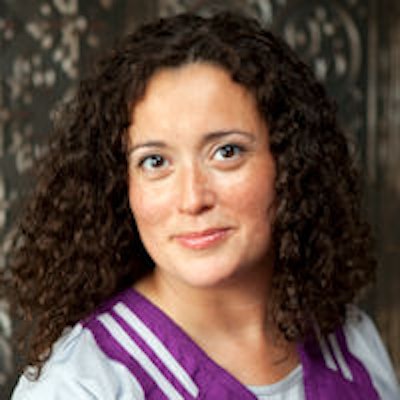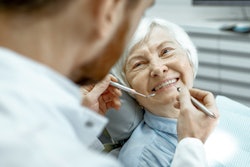
When Kathleen Bernardi, RDH, quit her job as a hygienist in a busy dentistry practice near Toronto six years ago, she did it to save her life. She'd been diagnosed with squamous cell carcinoma on her face a few months earlier and with ductal carcinoma in situ the year before.
 Kathleen Bernardi, RDH.
Kathleen Bernardi, RDH."I was physically, mentally, emotionally, and spiritually exhausted, mostly from work. And after a battery of tests, my doctor said that she didn't know how I was even able to function," the 56-year-old Bernardi recalled in a speech on her path to independent practice at the recent Canadian Dental Hygienists Association (CDHA) 2013 annual meeting in Toronto. "My body was screaming at me that something had to change. ... I gave my notice two weeks before Christmas 2007 and knew immediately by the sense of relief I felt that this was what I needed."
The dentist she'd worked for for 18 years "had occasional difficulties" with her complementary approach to oral healthcare and her suggestions for making the whole practice more profitable, Bernardi recalled. She realized she needs to practice the discipline she loves in a less hectic environment while allowing her to grow as a professional and give the best care to her patients.
Bernardi spent the first three months living in her pajamas, sleeping in, taking long walks in the woods, and journaling in a bid to gain clarity on the next step in her career path. Then one day while she was walking in the woods, a large owl suddenly flew over her head and landed in a tree nearby.
"I approached the tree with tears in my eye. Beauty and power sat quietly listening to me babble out loud about the privilege of finally meeting an owl," she said. After a few minutes the owl moved to another tree close by and then another, each time with Bernardi following and speaking from her heart to her new avian acquaintance. "Overwhelmed with emotion, I believed that this meeting had special meaning for me, and came home to research owl totems/medicine. The message: 'Even though it's dark, you can see when others cannot. Trust you intuition and follow your instincts.' I had my answer."
Following a well-established path
Fortunately Bernardi lives in Ontario, where dental hygienists won the right to enter independent practice in 2007. More than 600 dental hygienists now work for themselves in the province. The rest of the approximately 840 independent dental hygienists in Canada are in British Columbia, Alberta, and Quebec. In Alberta, dental hygienists have the widest scope of independent practice, including taking x-rays, diagnosing, and some prescribing and administering of medications, such as local anesthetics used in dental hygiene practice.
This contrasts with the U.S. where dental hygienists are usually regulated by boards of dentistry populated mostly by dentists and, as a result, a much more complicated mesh of regulations surrounds what services dental hygienists can do without dentist approval. Only in Colorado and Maine can dental hygienists practice independently in any setting without dentist supervision or agreement.
Bernardi was closely counseled by Ann Wright, RDH, MBA, director of dental hygiene practice for the CDHA. She also took a workshop given by Wright on business aspects of independent practice. Wright emphasized the importance of a well-thought-out business plan and showed what realistic costs are when opening a practice.
"I tell dental hygienists who are contemplating independent practice that it'll take two or three years for them to reach a break-even point and even longer before they can hope to have the same income they had when they were employees. I almost want to talk them out of it more than talk them into it. Because some of them look at what the dentist is billing for dental hygiene services and think they'll earn high incomes quickly and easily, and it's not easy," Wright told DrBicuspid.com. "And the time commitment is huge -- they don't get referrals from dentists, and patients often don't follow them to their independent practice, so they have to spend as much time marketing and promoting themselves as they do taking care of patients. And they're often the office cleaning lady as well."
High satisfaction with independent practice
Surveys that Wright and her colleagues have conducted consistently show, however, that independent dental hygienists are happy working for themselves.
This is confirmed by another dental hygienist in independent practice, Paulette Dahlseide, RDH, who owns and operates Providence Dental Hygiene in and around Cold Lake, Alberta. She started her practice in December 2010 after working in dentists' offices for 16 years. Dahlseide, who is Métis (a recognized aboriginal group whose cultures and ethnic identities resulted from unions between aboriginal and European people), received grant money to start her practice from Aboriginal Business Canada and from a Métis business development organization. She focused first on taking her services to Métis and First Nations communities and to the long-term care unit at a Cold Lake hospital. Then in late 2011, she started a clinic that's open three-days a week in a medical building in Cold Lake.
 Paulette Dahlseide, RDH.
Paulette Dahlseide, RDH."When you go into independent practice, it's because you want the freedom to be your own boss, and you want to make a difference both in your patients' lives and in the profession as a role model," Dahlseide said. "But there's also a lot more self-sacrifice -- I still don't make as much money as I did when I was working for a dentist, and also I'm sterilizing instruments at eight at night; the work doesn't end."
Similarly, Bernardi's husband was against her starting independent practice because of the financial and time commitments; however, he gradually accepted the idea. In May 2008, she opened Woodland Dental Hygiene in a separate walk-out portion of their house in a bucolic part of King City, north of Toronto. She did this after enrolling in a government program that provided her with a modest income while she took classes on setting up a business, and after a retired accountant agreed to be a mentor.
"While it's taken longer to get off the ground than a storefront location would have, being at home has allowed me greater flexibility with scheduling while trying to build my patient base, and the write-offs are huge," she said. "And patients canceling are not an issue, because I always have something else I can do in my business office or upstairs in my home, and I know that my patients appreciate this flexibility."
Bernardi sees four or five patients a day, each in a 90-minute appointment. She focuses on environmentally friendly and holistic oral healthcare, which provides a niche that attracts patients. She was the first to have a professional/dental office in Canada obtain Silver certification from the Eco Dentistry Association, which was a "very arduous" process, Bernardi said.
"Despite the amount of work involved, I decided that applying for and receiving certification through their GreenDOC program was worth pursuing, because it indicates my commitment to providing both outstanding patient care and outstanding planetary care. I also joined the Save 90 a Day Campaign, which entails significantly reducing water usage, because I'm committed to making decisions that reflect my respect for all living things."



















